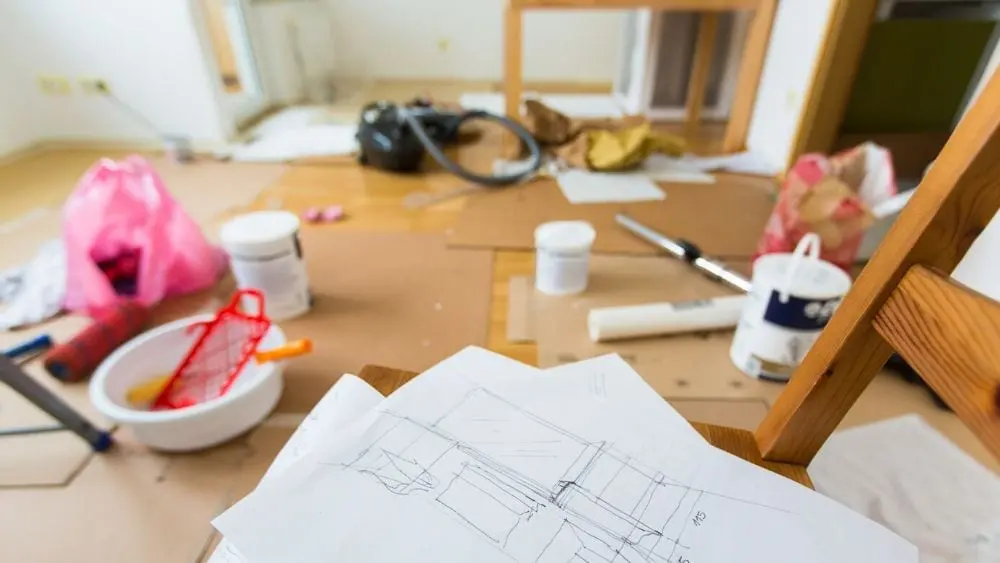
Lucie Watts, a home- owner in Leander, Texas, likes ceiling fans.
When Watts, 31, and her husband Douglas, 39, bought their newly built home in December 2015, the builder included only two: one in the living room, one in the master bedroom.
The couple decided to accept the standard models, but after they closed their purchase, they replaced those and added three more in their home’s other bedrooms.
Not all decisions are that easy because most builders offer numerous upgrades that are well worth the added cost. Few buyers have an unlimited budget, so they have to choose what to buy from the builder and what to do later.
Online Showroom Powered by Envision
Fulton Homes in Phoenix, Ariz., offers buyers about 2,900 competitively priced items — and that number doesn’t include color options, says Vice President of Operations Dennis Webb.
“If we have the exact same item (as a retailer), it wouldn’t make sense for us to be priced higher because then buyers will just put it in later,” Webb says.
Buyers can visit Fulton’s 13,000-square-foot showroom or they can shop for upgrades online.
The online showroom displays product information and pictures from more than 200 manufacturers. It’s powered by Envision Options Management, a platform designed by Builders Digital Experience, the parent company of New Home Source.
Envision helps builders present an interactive, dynamic home design center experience for buyers. Webb says it also helps buyers save money because builders can offer more options at more affordable prices.
Buyers can browse through the online showroom at home and review manufacturers’ information about product materials, warranties and use and care instructions. Buyers can also save favorite items to discuss and compare later.
Highest Value Builder Upgrades
Some upgrades are a no-brainer to buy from the builder because they involve structural changes to the home. Examples include a bonus room, extra bathroom, larger windows or an extended patio.
Watts and her husband got a bay window and a larger poured concrete patio with their $360,000 home.
“We made a deal with the builder,” Watts says. “We told them our maximum price and what we wanted and they negotiated with us.”
That’s typical of new-construction sales and it means buyers have to be aware of upgrade costs when they shop for a home, says Bradley Marshall, managing partner at DEN Property Group, a real estate brokerage in Irving, Texas.
“A buyer who has a $500,000 budget doesn’t want to look at a house with a base price of $495,000,” Marshall says. “If you want to spend $500,000, but can spend $525,000 to get the house exactly the way you want, it’s a lot easier to push it to that next level.”
If one builder says a buyer’s must-haves and maximum price aren’t realistic, the buyer can approach another builder who might be a little more flexible in negotiating, Marshall explains.
Resale Return on Upgrades Investment
Resale value should be a consideration as well. Marshall says structural modifications like the Watts’ window and patio could have a better return on investment than other types of options.
Fulton allows buyers to shop for options before they sign a contract so they’ll know how much everything they want will cost. Webb also says structural upgrades can be one of the best values.
“Say we offer a four-car garage and they want to make one of the bays an office. That will cost about, say, $5,000, but instead of 3,000 square feet, the house is 3,200 square feet. So they bought another 200 square feet for $5,000, for example,” Webb says.
Mortgage Makes Upgrades Easy
The Envision-powered online showroom also helps buyers understand how financing upgrades will affect their monthly mortgage payment.
Financing upgrades allows buyers to pay for the options over time at a low interest rate, instead of paying all at once in cash or paying overtime with a higher credit-card rate.
Financing an $1,800 refrigerator with a 30-year mortgage at 3.9 percent costs about $8 per month. Hardwood floors or plantation shutters, which can cost up to $30,000 or more, would add $142 per month with that rate and term.
Mortgage interest can be tax-deductible, saving the homeowner money at tax time.
What’s more, mortgaged items that aren’t fixtures can be resold or kept when the homeowner moves out.
“You can mortgage a refrigerator for 30 years, move in five years and take it with you,” Webb says.
When to DIY
Still, some upgrades, like the Watts’ ceilings fans, can be easier or cheaper for homeowners to do themselves. A home security system, for example, is a good do-it-yourself (DIY) project.
Tracey Hampson, a Realtor at Century 21 Troop Real Estate in Valencia, Calif., cites light fixtures and kitchen and bathroom faucets as two examples.
“Those are easy to do and don’t have to be done right away. What you have works and does the job,” Hampson says.
The Wattses wanted a carpet upgrade that wasn’t included in the price of their home. Rather than spend more, they decided to hold off on that option until later.
Landscaping and window coverings are almost always do-later projects, though some builders do offer them as standard or optional items.
The downside of DIY projects is that many buyers plan DIY upgrades that never happen.
Marshall says he’s seen numerous homes where buyers said they intended to make specific changes, but “three years later, they still haven’t updated said thing.”
Time, Money
Disruption and delay also factor into buyers’ upgrade decisions.
For example, a builder’s flooring upgrade might seem costly, but replacing floors after the fact can be even more expensive and time-consuming.
“If buyers upgrade the flooring once they’ve moved in, they’ll have to move everything out and take out the flooring (the builder) put in. It will be double the cost and (is) very invasive to their life,” Hampson says.
A custom paint job also means furniture and belongings will have to be moved.
Hampson says a builder’s granite countertops upgrade is likely to be cheaper than buying a slab of granite and hiring a contractor to install it later. That’s because builders purchase materials in bulk, making their cost lower than what an individual homeowner likely would pay.
By the way, builders typically don’t allow buyers to supply their own materials or labor alongside the builder’s crews. However, you can ask your builder if they offer any allowances.

Marcie Geffner is an award-winning freelance reporter, writer and editor in Ventura, California. In the last decade, she has penned more than 1,000 published stories about residential and commercial real estate, banking, credit cards, computer security, health insurance and small business, among other subjects. Editors describe her as “detail-driven,” “conscientious,” “smart” and “incredibly versatile.” Her award-winning reporting has been lauded as “rock solid,” “spot-on relevant,” “informative,” “engaging,” “interesting” and “nuanced.” Her stories have been cited in seven published nonfiction books and two U.S. Congressional hearings.
Prior to her freelance career, Geffner was senior editor of California Real Estate magazine. Later, she became managing editor of Inman.com, an independent real estate news website. She also has prior employment experience in technical writing, corporate communications and employee communications. She received a bachelor’s degree in English with high honors from UCLA and master’s degree in business administration (MBA) from Pepperdine University in Malibu, California. She enjoys reading, home improvement projects and watching seagulls at the beach.
 Zero Energy Home Design Goes Mainstream
Zero Energy Home Design Goes Mainstream